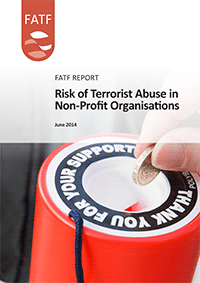Les organisations terroristes ont besoin de fonds, de matériel, de personnels et de l’opinion publique pour conduire leurs activités illégales. Les organisations à but non-lucratif dépendent des mêmes capacités pour leurs causes bonnes et légitimes.
Le niveau élevé de confiance du public dans le travail de qualité réalisé par les organisations à but non–lucratif, leur importante main d’œuvre passagère et le réseau mondial qu’elles ont créé sont quelques-uns des facteurs qui rendent les organisations à but non-lucratif vulnérables et attractives pour les terroristes et les organisations terroristes. Virtual Currencies - Key Definitions and Potential AML/CFT Risks
(Suite disponible en anglais uniquement)
Terrorist organisations and non-profit organisations have very different objectives, but often rely on similar logistical capabilities: Funds, material, personnel and public influence are key resources for non-profit organisations (NPOs). Terrorist organisations seek the same resources to further their cause, which makes NPOs vulnerable for abuse by terrorists or terrorist networks.
FATF Recommendation 8 requires that countries review their laws and regulations to ensure that NPOs cannot be abused for the financing of terrorism.
This typologies report examines in detail, how and where NPOs are at risk of terrorist abuse. The report uses case studies as well as input collected from law enforcement, other government actors and NPOs themselves to increase awareness of the methods and risk of abuse for terrorism of the NPO sector, both domestically and internationally.
This report aims to answer the questions:
|
Who
|
…are the NPOs that are most at risk of abuse from terrorist entities?
|
|
What
|
…is the nature of the threat posed by terrorist entities to the NPO sector?
|
|
When
|
…are NPOs most are risk of abuse by terrorist entities?
|
| Where |
…are NPOs most at risk of abuse by terrorist entities?
|
| Why |
…are NPOs at risk of abuse by terrorist entities?
|
| How |
…are NPOs vulnerable to terrorist activities?
…do terrorist entities abuse the NPO sector?
…have cases of abuse been detected and disrupted?
|
The report highlights that NPOs are at risk of being abused for terrorism at different levels: from the misappropriation of street-level fundraising to the infiltration of terrorist organisations at the programme delivery level to promote their ideology.
There are other factors that make the NPO sector very attractive to terrorist organisations, some of which are :
- Globalisation, which changed the way NPOs operate, drawing them into areas where terrorist networks operate. This has created interconnected financial and transportation networks that are of interest to terrorist organisations.
- The large transitory workforce of NPOs, with an important portion of that workforce made up of volunteers. Staff, and in particular volunteers, are often not given a thorough background check. NPOs also face difficulties attracting and retaining personnel that have technical expertise in risk assessment, compliance and legal matters.
- The high level of public trust in the good work done by the NPO sector. NPO activities are generally not scrutinised as consistently as other sectors. Terrorist networks abuse this public trust by piggyback on the legitimate activities of an – unwitting – NPO, or by mimicking legitimate NPOs.
The report provides an insight into the risk of terrorist abuse of each of the operational areas of NPOs:
- Collection of Resources
- Transfer of Resources
- Transfer of Resources
- Expenditure of Resources
- Delivery of programmes
Supported by the case studies collected for this research project, this typologies report provides a number of red flag indicators to help all stakeholders, including NPOs, government officials, financial institutions and designated non-financial business or professions DNFBPs identify and investigate possible cases of abuse.


 Twitter
Twitter
 Facebook
Facebook
 Instagram
Instagram
 Linkedin
Linkedin
